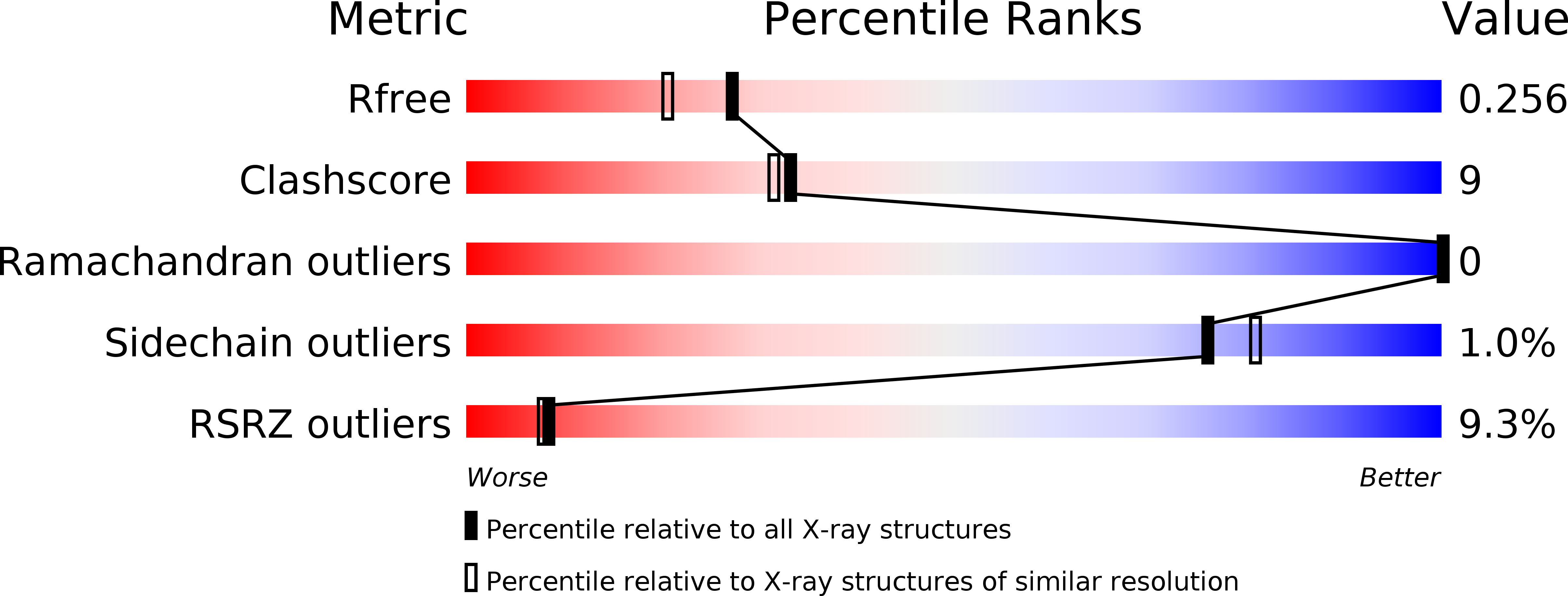
Deposition Date
2008-10-06
Release Date
2008-11-04
Last Version Date
2024-11-13
Entry Detail
PDB ID:
2V5G
Keywords:
Title:
Crystal structure of the mutated N263A YscU C-terminal domain
Biological Source:
Source Organism:
YERSINIA ENTEROCOLITICA (Taxon ID: 630)
Host Organism:
Method Details:
Experimental Method:
Resolution:
2.00 Å
R-Value Free:
0.25
R-Value Work:
0.22
R-Value Observed:
0.22
Space Group:
P 43 21 2


